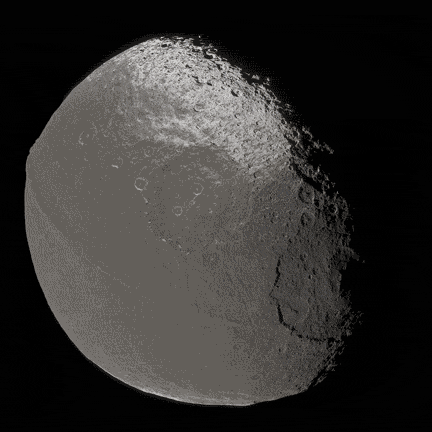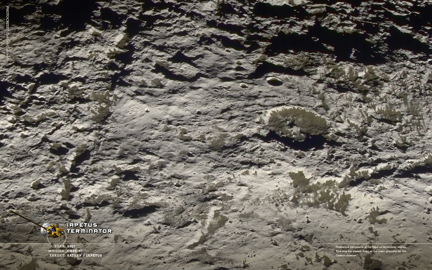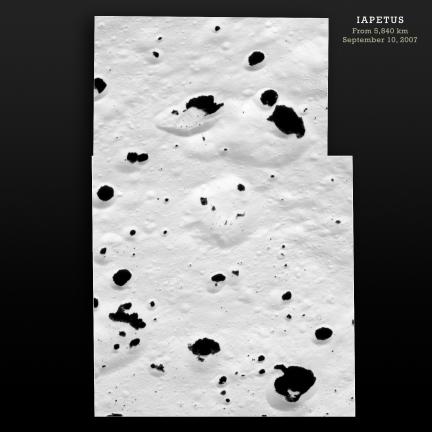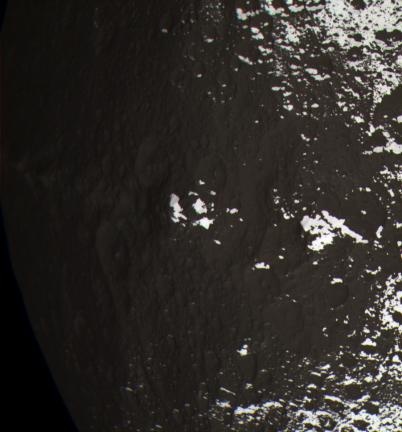Around Saturn from fabio di donato on Vimeo.
In Saturn’s Rings Official Trailer
The long awaited official trailer for “In Saturn’s Rings” has been unleashed. Looking forward to this film for over three years now.
Lets Go See Iapetus Again
Rounding the Pole of Iapetus
50 Years of Space Exploration Map
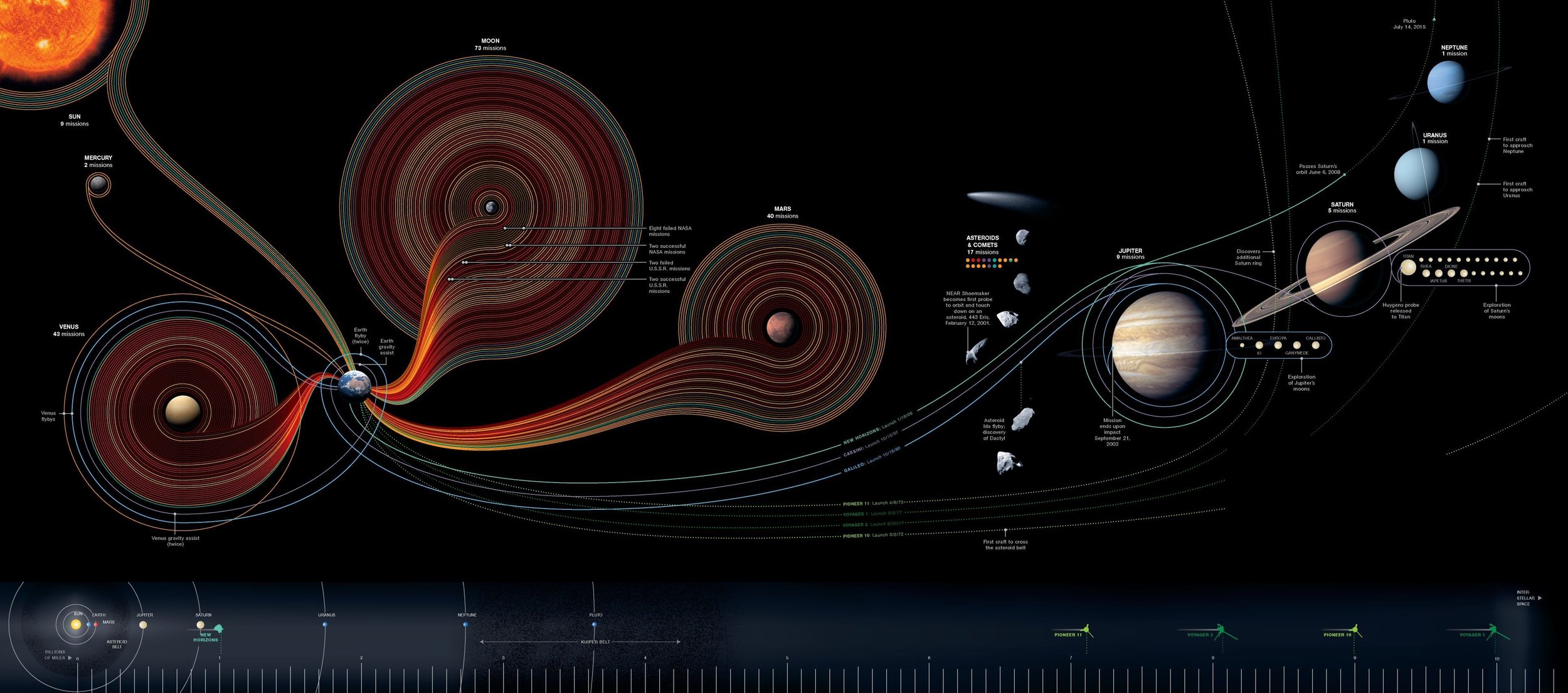 This is so nice, but I am furious that I didn’t get to design this. This is Information design at it’s best naturally by National Geographic. You can see 50 years of robotic planetary exploration at a glance. It even includes failed missions represented by darker desaturated lines. As far as I can tell the cream colored lines are US and the red ones are Soviet. Interesting to see how many of those lines go dark around Mars.
This is so nice, but I am furious that I didn’t get to design this. This is Information design at it’s best naturally by National Geographic. You can see 50 years of robotic planetary exploration at a glance. It even includes failed missions represented by darker desaturated lines. As far as I can tell the cream colored lines are US and the red ones are Soviet. Interesting to see how many of those lines go dark around Mars.
Now where does one purchase such a thing? Perhaps this month’s issue of NG? Here is the link to it on their site complete with zoom viewer and them some kind samaritan posted a hires version to flickr.
iPhone Skins Featured on feulyourcreativity.com
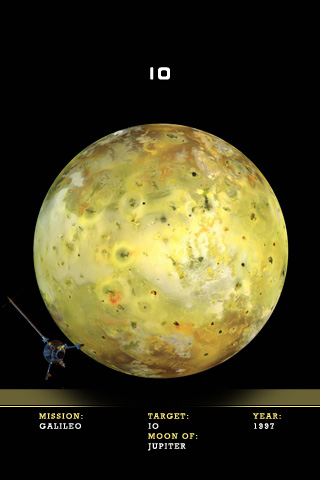 Not to re-post old material, but our iPhone planetary skins were recently posted to fuelyourcreativity.com for free download. So I thought I would just remind everyone and maybe direct a little traffic love their way.
Not to re-post old material, but our iPhone planetary skins were recently posted to fuelyourcreativity.com for free download. So I thought I would just remind everyone and maybe direct a little traffic love their way.
Wallpaper: Iapetus Terminator
Another work by Gordan Ugarkovic. He created this composite with hi-res clear images (monochrome, that is) and combined that with low quality color data. It is often possible to get a good full color image with low-quality data as long as there exists a good quality clear image to work with. The full composite is here.
I have noticed that Gordan’s work has begun popping up on the Planetary Society blog fairly often. Congratulations to both Gordan for the recognition and to PS for making his gorgeous composites available to the masses!
The Voyager Mountains
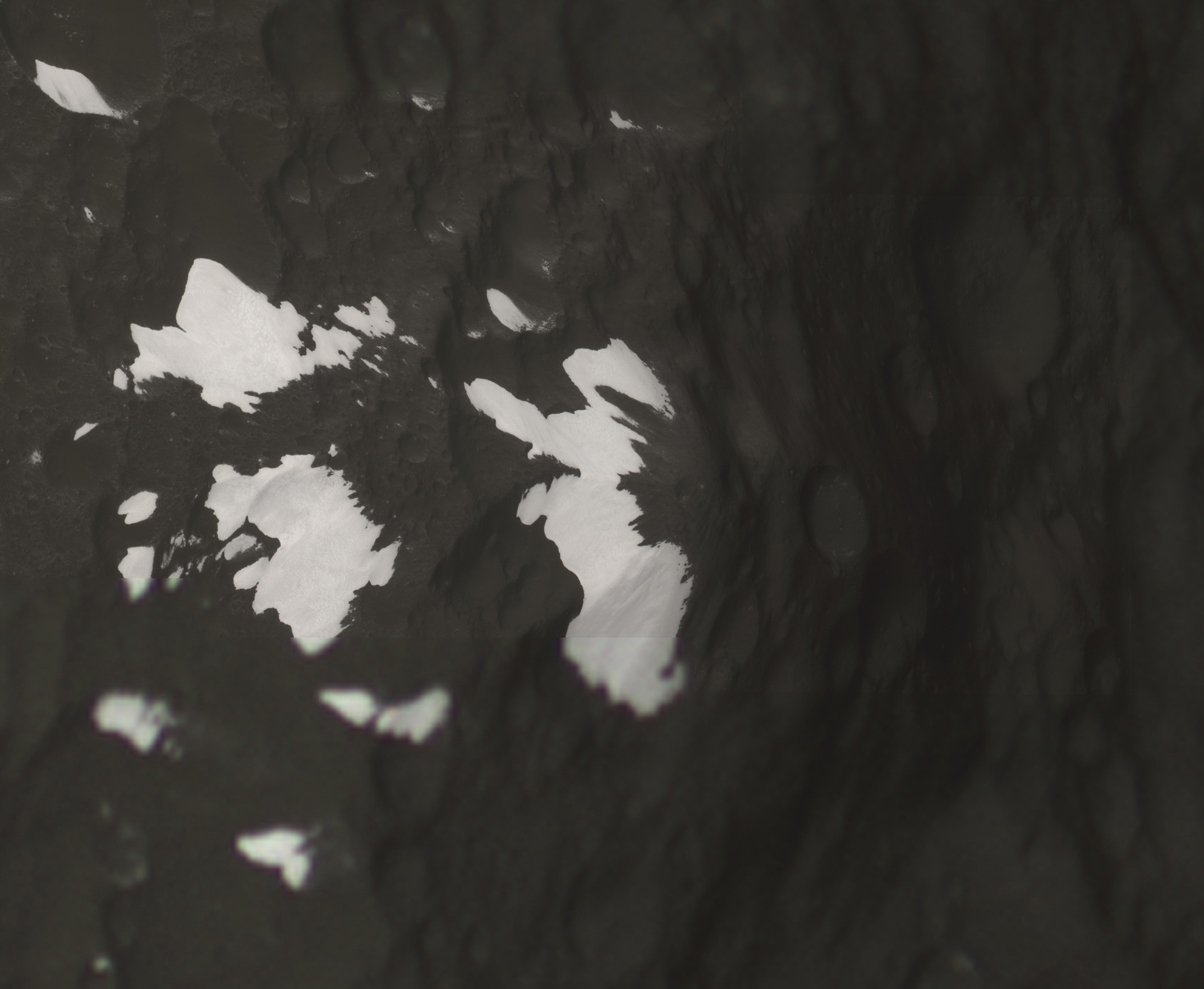 Nice moment found within Gordan Ugarkovic’s recently constructed mosaic of Iapetus’s Voyager Mountains region. See Gordan’s flickr post for the full mosaic.
Nice moment found within Gordan Ugarkovic’s recently constructed mosaic of Iapetus’s Voyager Mountains region. See Gordan’s flickr post for the full mosaic.
Just discovered this same area is in this post on the left side vertical center. The spacecraft was either flipped or the image is in the post.
The iPhone Set 01: Bodies of Major Interest
 If I am going to keep making these things… I’d be a fool to not include a set for the Apple iPhone. Coincidentally, when you purchase your iPhone and do not yet have a phone service, the phone displays a full-disc image of the Earth pretty much displayed exactly as these do when uploaded to your iPhone. So in the spirit of continuity, you can now opt instead to have Mercury, Venus, Earth, The Moon (Luna), Mars, Jupiter, Io, Europa, Ganymede, Callisto, Saturn, Enceladus, Titan, Iapetus, Hyperion, Uranus, Miranda, Neptune or Triton grace your screen instead of the default Earth.
If I am going to keep making these things… I’d be a fool to not include a set for the Apple iPhone. Coincidentally, when you purchase your iPhone and do not yet have a phone service, the phone displays a full-disc image of the Earth pretty much displayed exactly as these do when uploaded to your iPhone. So in the spirit of continuity, you can now opt instead to have Mercury, Venus, Earth, The Moon (Luna), Mars, Jupiter, Io, Europa, Ganymede, Callisto, Saturn, Enceladus, Titan, Iapetus, Hyperion, Uranus, Miranda, Neptune or Triton grace your screen instead of the default Earth.
The easiest way to install wallpapers to your iPhone is to make a special set in iPhoto and simply drag all the files to that folder. Then in iTunes have your iPhone sync that folder to your photos collection. After that it is as simple as opening the “Photos” area of your iPhone. Go to your new folder of images and open whichever image you want. Then tap on the image just once and assign it as a wallpaper using the “Use as Wallpaper” button in the lower left corner of the screen.
If you have a PC I have no idea in hell how the hell you get images into your iPhone. I would buy a Mac… you have an iPhone and use iTunes… you are half-way there.
For a version of these with no graphics see this link.
Wallpaper: Iapetus Bright Portrait
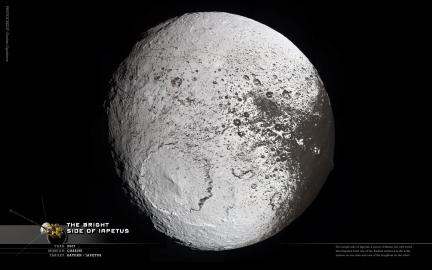 It had to happen… regularly featured on this site Gordan Ugarkovic stitches together an awesome hi-res full globe image of Iapetus only a few days after the closest approach (see previous post for even larger sized wallpaper for bigger monitors). I usually only label an image a “portrait” once for each body, but seeing as Iapetus has two different sides… I think it deserves two. Here is the darker side imaged earlier in 2005.
It had to happen… regularly featured on this site Gordan Ugarkovic stitches together an awesome hi-res full globe image of Iapetus only a few days after the closest approach (see previous post for even larger sized wallpaper for bigger monitors). I usually only label an image a “portrait” once for each body, but seeing as Iapetus has two different sides… I think it deserves two. Here is the darker side imaged earlier in 2005.
2560 x 1600 Set 01
Iapetus September 12 (color)
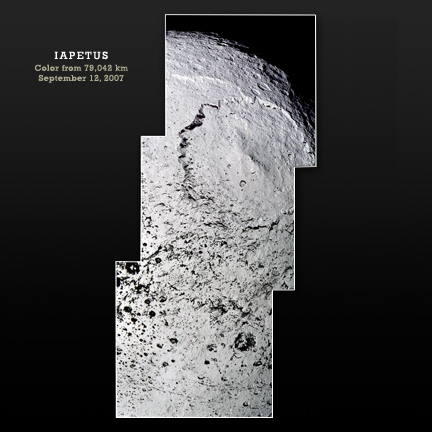 In the world of moons and planets people are quite excited about the recent Cassini flyby of Iapetus. What we have known about this moon for quite some time is that it is much lighter on one side than the other. Voyager gave us a peek at that phenomenon and then when Cassini got a closer look it started to seem as if something has rained down this dark material on one side of the moon but not on the other. However, now that Cassini has come within 1500 km the details are staggering. Nobody has any idea at this point what possible process could have created this surface. There are places where the bright material seems deposited and others where the dark does.
In the world of moons and planets people are quite excited about the recent Cassini flyby of Iapetus. What we have known about this moon for quite some time is that it is much lighter on one side than the other. Voyager gave us a peek at that phenomenon and then when Cassini got a closer look it started to seem as if something has rained down this dark material on one side of the moon but not on the other. However, now that Cassini has come within 1500 km the details are staggering. Nobody has any idea at this point what possible process could have created this surface. There are places where the bright material seems deposited and others where the dark does.
As more details and theories come in, there will be additional posts. Just worth noting that the scientific community seems to be as excited about this as they were when they got their first looks at Jupiter’s moons from Voyager.
By the way, DO CLICK ON THAT IMAGE above… its HUGE.
Iapetus September 10 - The Ridge (mono)
The ridge at Iapetus’s equator from only 3,148 km. The black and white nature of Iapetus is only one of its bizzare traits, the other is the huge mountain range that runs almost completely around its equator. This the feature that often causes the mainstream media to compare the moon to a walnut.
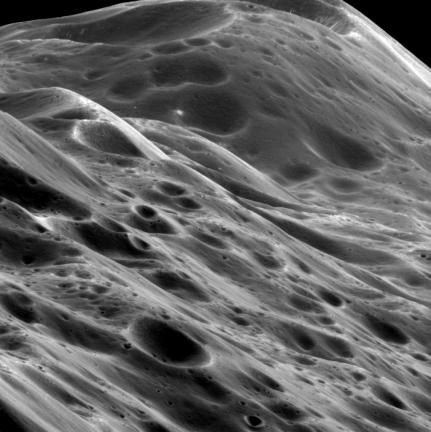
That feature is clearly seen in this previous post.
Iapetus September 10 - 03 (mono)
Iapetus September 10 - 02 (color)
Iapetus September 10 - 01 (color)
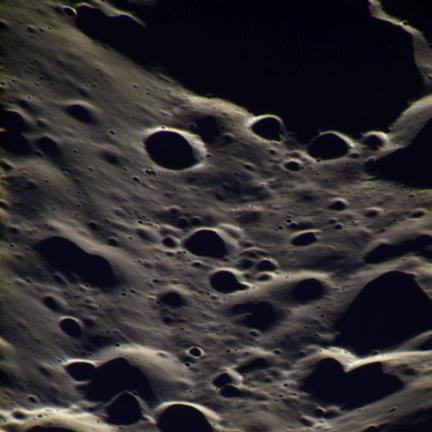 From yesterday’s encounter at 8,593 kilometers. Near true color image constructed from the infrared, green and ultraviolet filters.
From yesterday’s encounter at 8,593 kilometers. Near true color image constructed from the infrared, green and ultraviolet filters.
Iapetus From 1,478 km (mono)
Iapetus Images Coming In
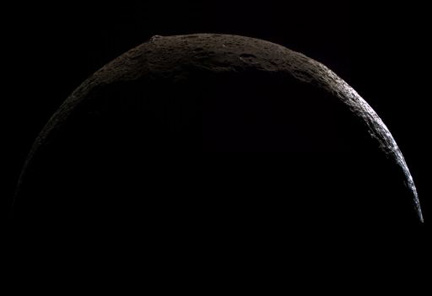 Images are starting to appear on the Cassini raw files site. Click the above image to get the giant color hi-res composite by Emily Lackdawalla from The Planetary Society website. The famous walnut ridge is clearly visible in better detail than we have seen previously. Also visible is a clear boundary between the famous Iapetus white and dark sides beginning to appear on the right.
Images are starting to appear on the Cassini raw files site. Click the above image to get the giant color hi-res composite by Emily Lackdawalla from The Planetary Society website. The famous walnut ridge is clearly visible in better detail than we have seen previously. Also visible is a clear boundary between the famous Iapetus white and dark sides beginning to appear on the right.
Closest Iapetus Flyby of Mission In 2 Days
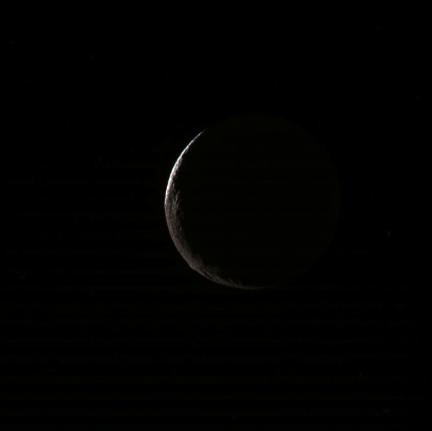 On Sept. 10, the Cassini spacecraft performs its closest flyby during the entire mission of the odd moon Iapetus, passing by about 1,640 kilometers. The moon is somewhat further out than most of the others, so despite the fact that Cassini has many months if not years in front of it still, the moon is too out-of-the-way to be making any additional passes. Who knows when another spacecraft will be this close again? Hope its a good look… it will have to last.
On Sept. 10, the Cassini spacecraft performs its closest flyby during the entire mission of the odd moon Iapetus, passing by about 1,640 kilometers. The moon is somewhat further out than most of the others, so despite the fact that Cassini has many months if not years in front of it still, the moon is too out-of-the-way to be making any additional passes. Who knows when another spacecraft will be this close again? Hope its a good look… it will have to last.
I made this “close to true color” image from the raw files using the BLU, IR1 and GRE filters. The distance seen here is approximately 694,000 kilometers.
Wallpaper: Iapetus Portrait
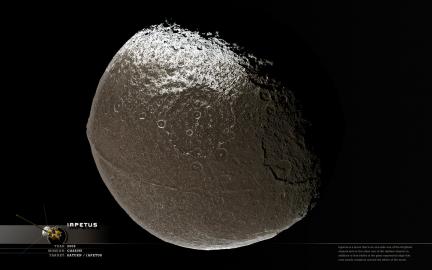 Iapetus is a moon that is on one side one of the brightest objects and on the other one of the darkest objects. In addition to this oddity is the giant equatorial ridge that runs nearly complete around the whole of the moon. Neither of these features origins have been established, although many theories exist. One theory is that Iapetus at one time grazed the edge of Saturn’s rings which would have deposited a huge amount of material around its equator. But to do this it would have had to have been much closer to Saturn and have been ejected out past most of the larger moons to its present position. Another theory suggests that the materials might have come from another of Saturn’s moons, Pheobe, and spiraled in to be swept up by Iapetus. More theories involve internal heating and the movement of matrials from the interior to the surface through various means such as cryo-volcanism.
Iapetus is a moon that is on one side one of the brightest objects and on the other one of the darkest objects. In addition to this oddity is the giant equatorial ridge that runs nearly complete around the whole of the moon. Neither of these features origins have been established, although many theories exist. One theory is that Iapetus at one time grazed the edge of Saturn’s rings which would have deposited a huge amount of material around its equator. But to do this it would have had to have been much closer to Saturn and have been ejected out past most of the larger moons to its present position. Another theory suggests that the materials might have come from another of Saturn’s moons, Pheobe, and spiraled in to be swept up by Iapetus. More theories involve internal heating and the movement of matrials from the interior to the surface through various means such as cryo-volcanism.
IMAGE NOTE: The image was originally black and white and has been colorized based upon other colored images.
Also see the wallpaper of Iapetus’s brighter side here added in September, 2007.

